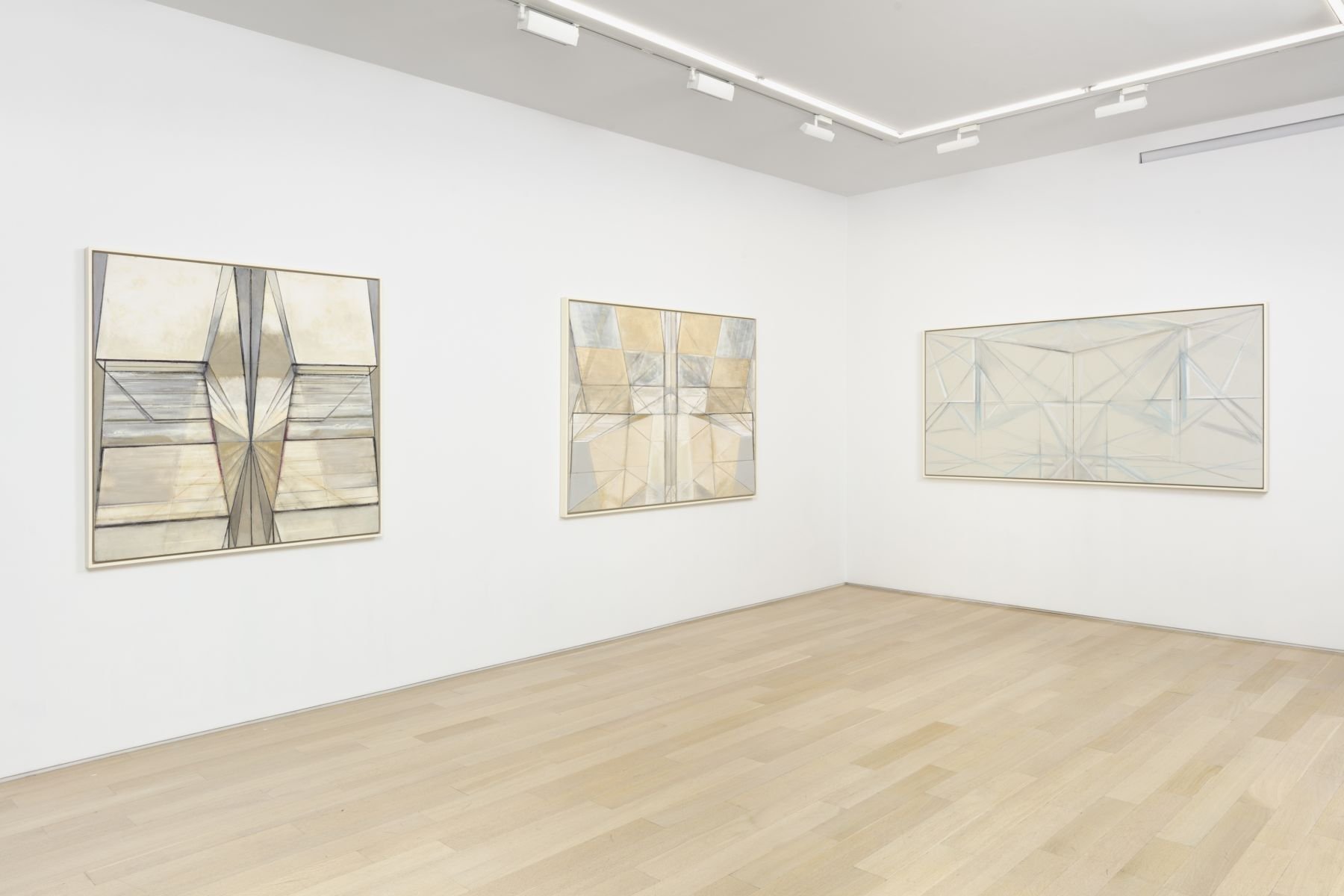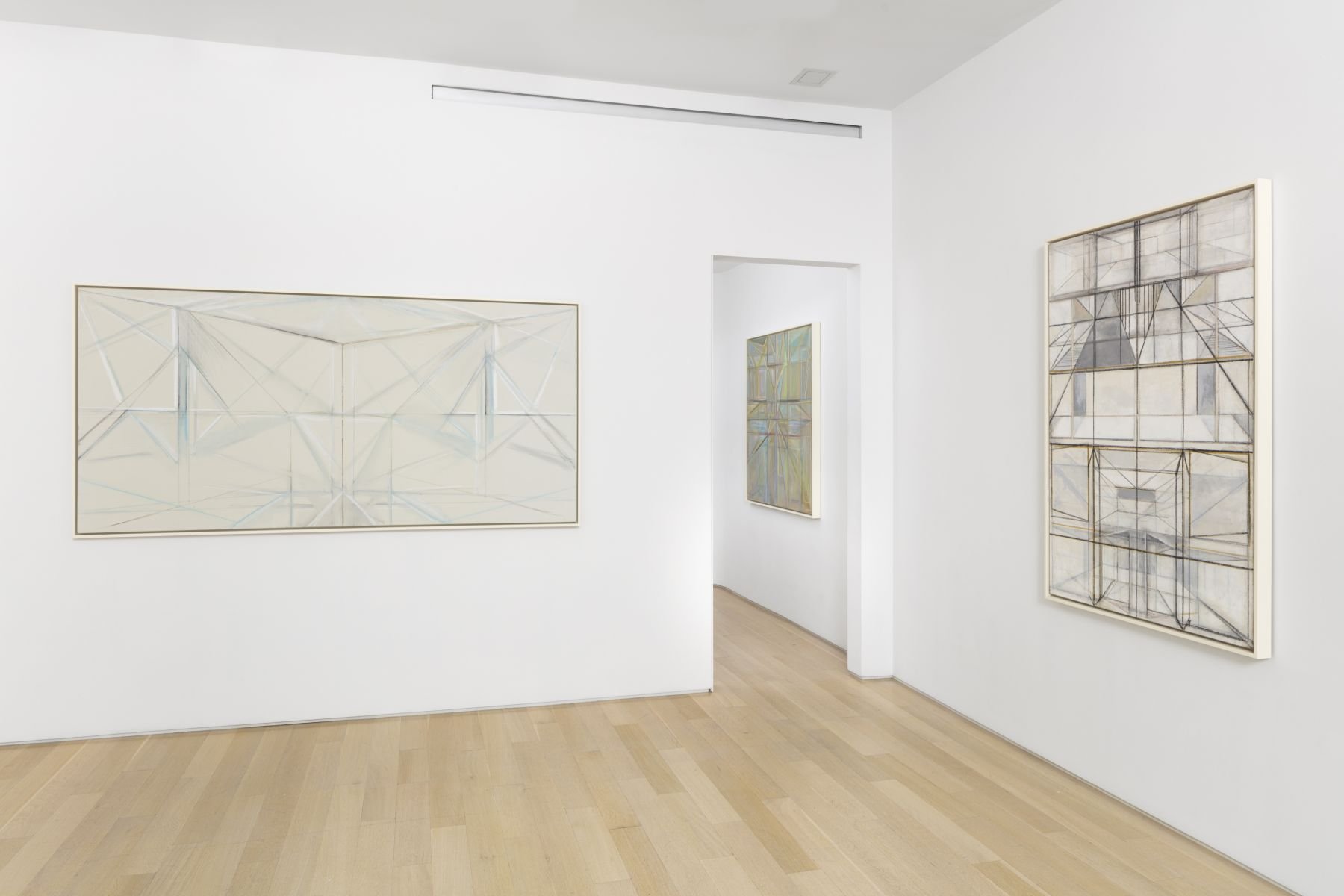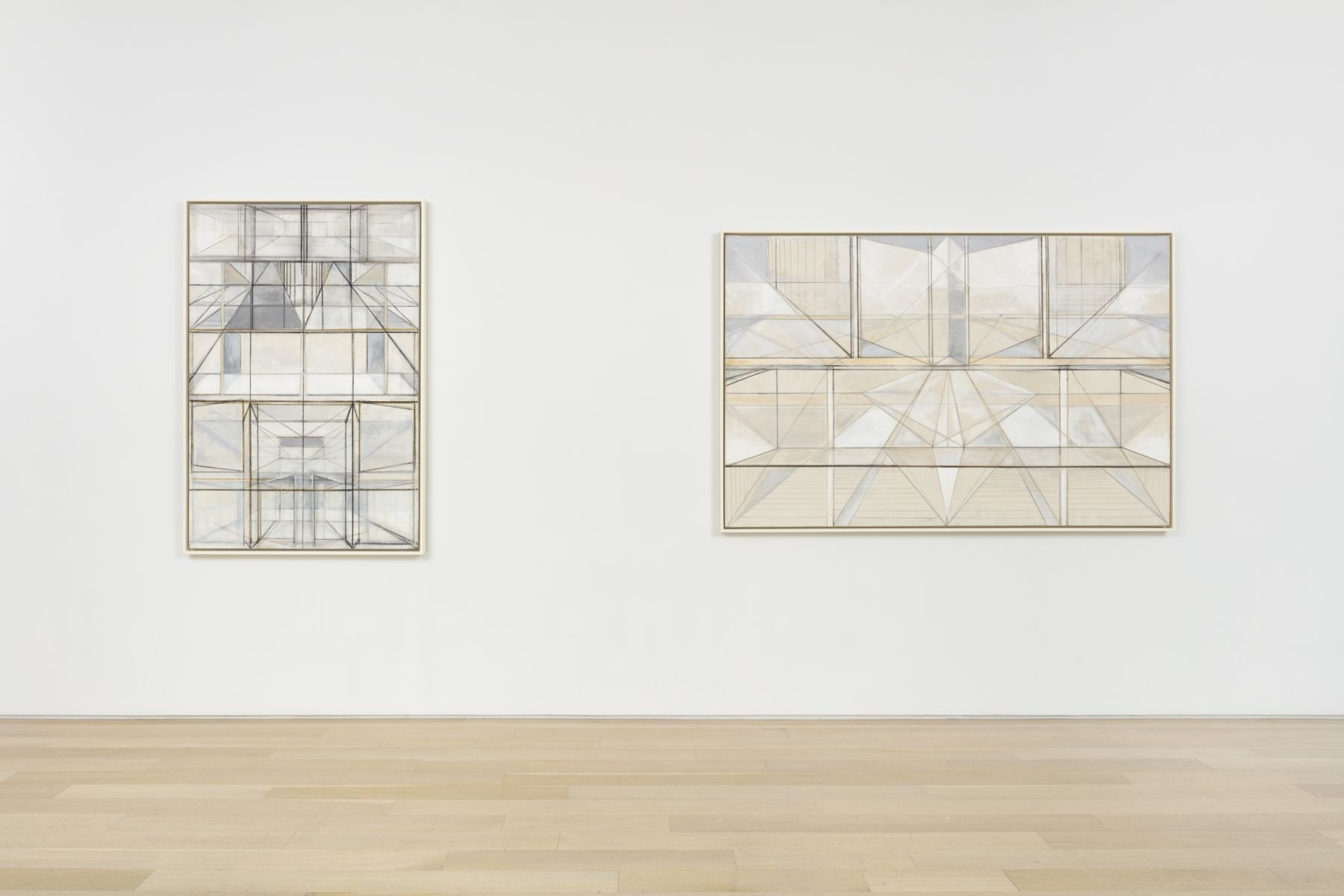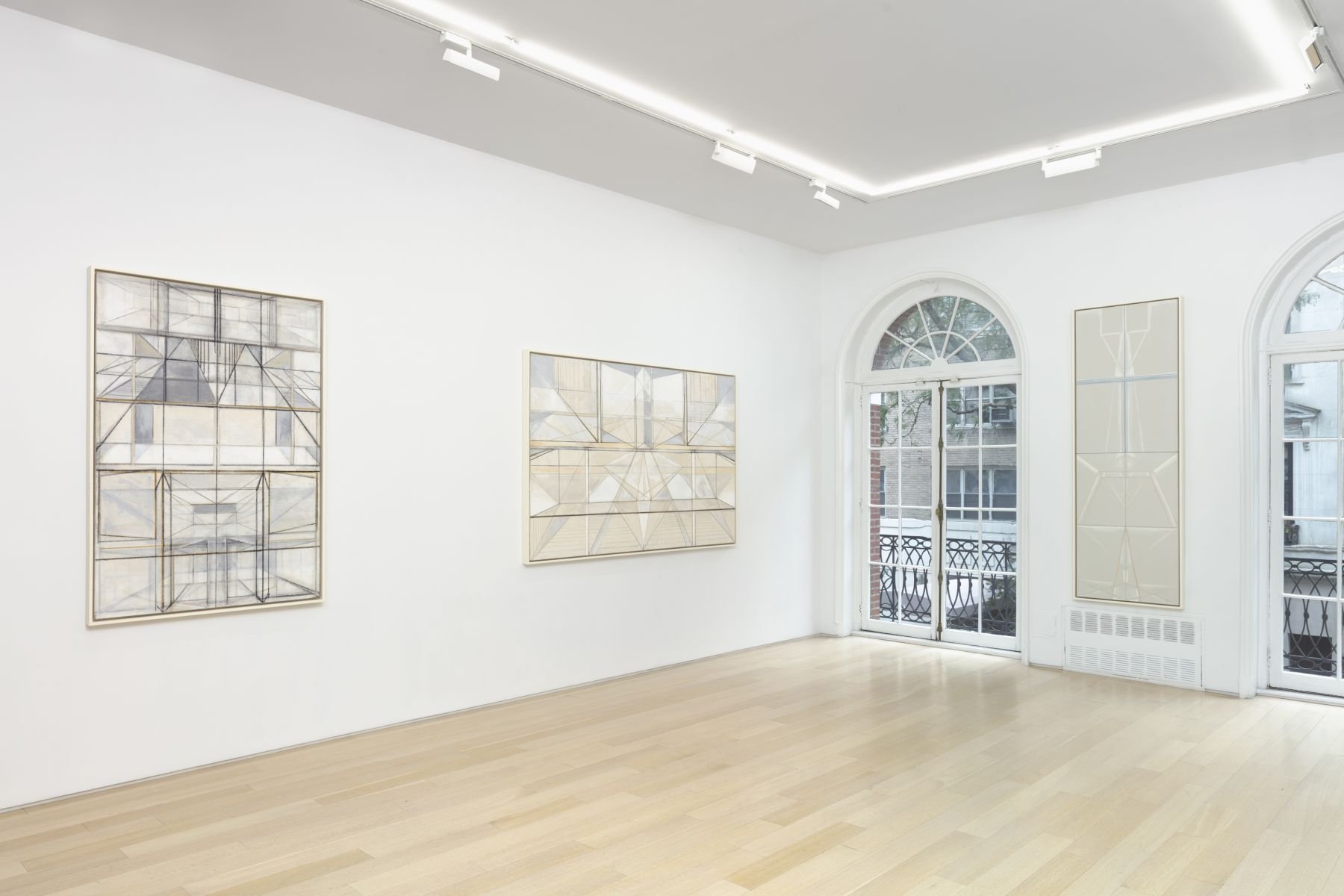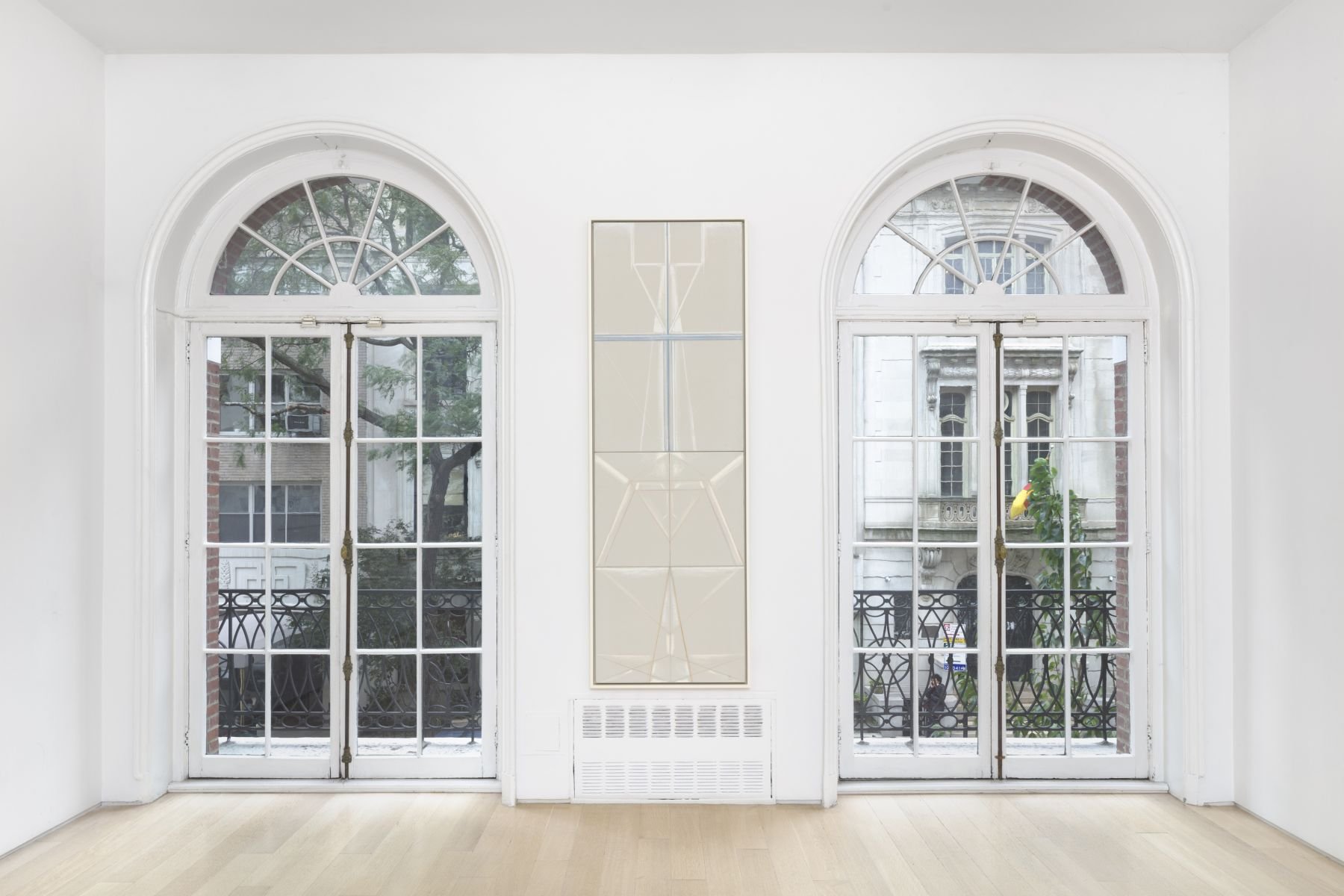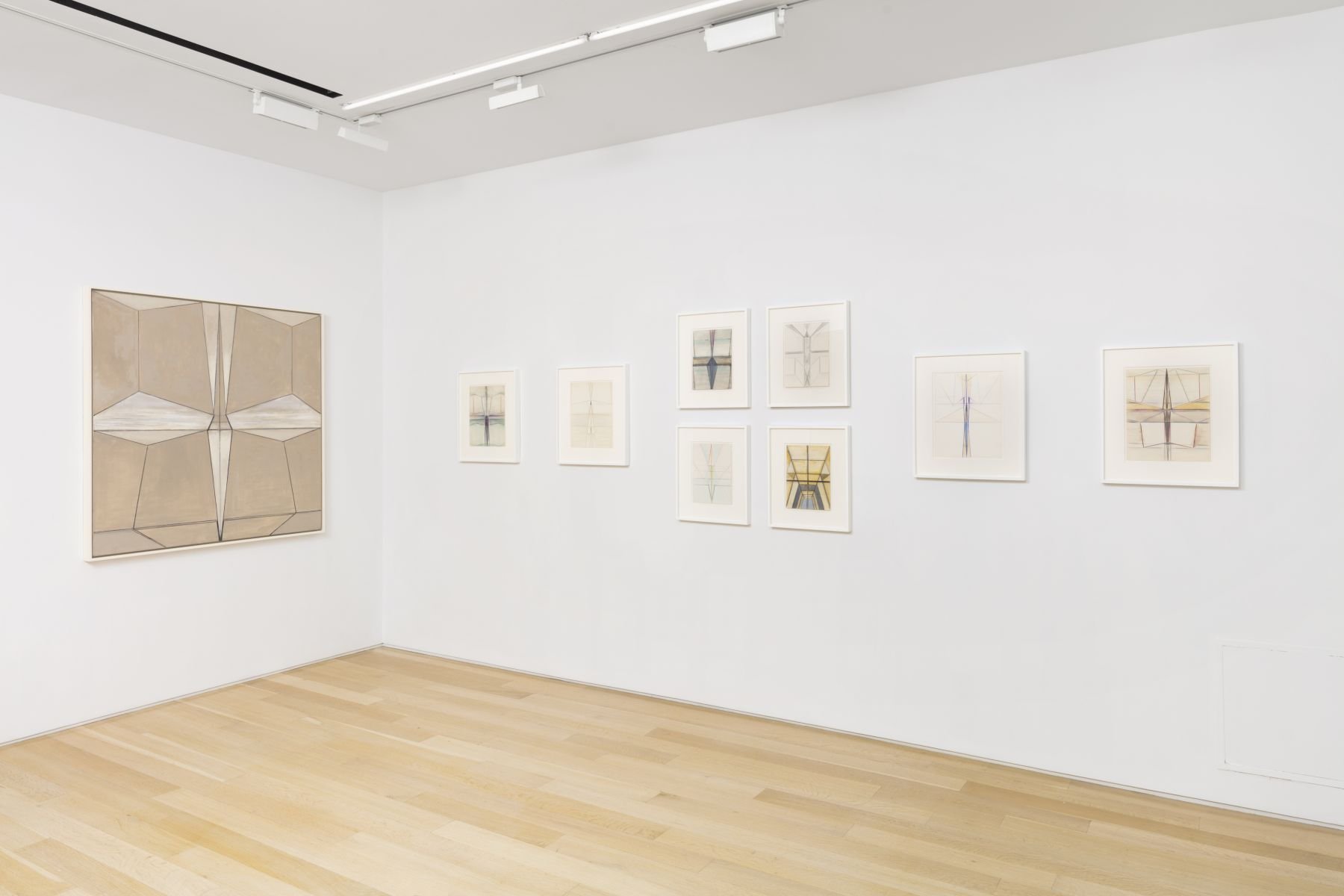Van Doren Waxter is delighted to present an exhibition of paintings and drawings by artist Hedda Sterne (b. 1910 - d. 2011), on view on the 2nd floor of the gallery’s 1907 townhouse space at 23 E 73rd Street from October 28 to December 23, 2021. This is Sterne’s third solo exhibition at Van Doren Waxter since exclusive representation of the Hedda Sterne Foundation was announced in 2015. The coming exhibition will feature a selection of paintings and drawings from the 1980s and ‘90s.
The exhibition is accompanied by a fully illustrated catalogue containing a fresh interpretation of the artist’s late abstractions by Carol Kino, a veteran of visual art and cultural reportage. Kino deftly situates Sterne’s longest running cycle of work alongside modernist and geometric architecture and sculpture of the 1970s and 1980s, from the late architect I.M. Pei to the Light and Space movement and argues that it “presages the interest in overlapping perspectives” of contemporary artists Doug Aitken and Julie Mehretu.
As a member of the New York School who was trained among the European avant-garde, Sterne created a pioneering body of work through restless visual investigation. Her seven-decade career cemented her role as one of the leading 20th century abstractionists. This series of paintings and drawings represents a critical development in the artist’s dynamic oeuvre. Following her work in the 1970s, which explored the implied tension between points (a tension she likened to the magnetism between the stars of a constellation) Sterne spent the last two decades of the millennium utilizing line to make these tensions explicit. Geometric paintings and drawings became their own interior space through Sterne’s play with the meditative properties of line, perspective, space, and light. Sterne described works of this period as both “Patterns of Thought” and “Architecture of the Mind” – a nod to their subject, an imagined three-dimensional space. Overlapping geometric forms harken back to her iconic abstracted cityscapes of the 1940s and 50s, a self-reference that underscores Sterne’s nomenclature “Architecture of the Mind.” The portrayal of internal thought through external geometry accentuates a central tenet for her career: the visualization of the liminal.
Sterne’s distinctive visual language was intimately tied to her life-long study of philosophy, as well as the artist’s background in European Surrealism. Themes of conscious and unconscious visual communication recur in her work. Here, the rhythmic reverberations of geometric signs and symbols, including the Cross and the Star of David, function as unconscious metaphor. The reoccurrence of such iconic symbols situates these works somewhere between abstraction and figuration, a typical mode for the artist. Understanding that she could never separate such symbols from their religious significance, the effort to open them up as geometric shapes speaks to a different transcendence in these works – existing in a space between both spiritual and visual traditions.
Hedda Sterne, visionary and endlessly experimental Romanian-American artist, was born in Bucharest in 1910. She attended classes in the Paris ateliers of André Lhote and Fernand Léger and at the Académie de la Grande Chaumière in the late 1920s and early 1930s. In 1929, she began studying philosophy at the University of Bucharest. She produced a variety of mixed media works on paper and collage invoking Constructivism and Surrealism while living again in Paris from 1932 to 1939, leaving France that year to return to Bucharest before the outbreak of the Second World War. In 1941, Sterne fled war-torn Europe for New York City, where she established a studio on East 50th Street and became close friends with Peggy Guggenheim, who in 1943 began exhibiting Sterne’s work. In 1943, she received the first of many solo exhibitions organized by Betty Parsons, and in 1946 would become the only woman included in the Betty Parsons Gallery’s opening roster of artists. A self-proclaimed “well-working lens,” Sterne continuously sought new ways of interpreting the world around her, shifting from urban landscapes, interiors, and machinery in the 1940s, atmospheric space and organic shapes in the 1950s, open spaces and horizons in the 1960s, the face and the figure in the 1970s, prismatic abstractions in the 1980s, and graphite and pastel abstractions on paper in the 1990s and 2000s. She died peacefully in her home in New York City at age 100 in 2011.
Sterne has been included in recent and significant exhibitions, such as Elles font l’abstraction, Centre Pompidou, Paris (2021), Making Space: Women Artists and Postwar Abstraction, The Museum of Modern Art, New York (2017); Epic Abstraction: Pollock to Herrera, The Metropolitan Museum of Art, New York (2018); Affinities for Abstraction, Parrish Art Museum, Watermill, NY (2021); Crossroads: Carnegie Museum of Art’s Collection, 1945 to Now, Carnegie Museum of Art, Pittsburgh, PA (2018-2021); and The Whitney’s Collection: Selections from 1900 to 1965, Whitney Museum of American Art, New York (2019).


